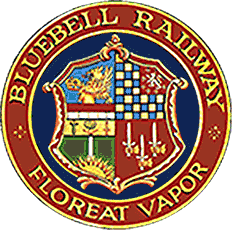Carriage & Wagon Dept -
Stock Lists: Carriages, Vans, Wagons & Multiple Units -
C&W News
SR Coach Group - Goods Division -
Operation Undercover -
Technical -
Join us


London, Brighton & South Coast Railway
12-wheeled Directors' Saloon No.60


This superb vehicle should be the pride of our coaching stock fleet; not simply for its impressive appearance, as
displayed in the official photograph above, but also for its uniqueness. Only two twelve-wheeled carriages were
built by the LB&SCR; the King's Saloon and this, the Directors' Saloon. It is also the only LB&SCR bogie
carriage to have survived complete into preservation in mainland Britain.
A start was made on the construction of this vehicle at Lancing Works during the first half of 1914. Given the
diagram number 67 and running number 60 in the LB&SCR First Class list, it was to be a Saloon for the use of the
directors of the Company while inspecting or visiting the system. With a 60ft body it had a large dining saloon,
26ft in length, with two tables having moveable chairs and a lounge, 12ft in length. These were connected by
a short corridor, off which was the kitchen, pantry and a lavatory. Each end of the vehicle was bowed and fitted
with three large windows for observation. Steam heating was fitted. The six-wheeled bogies were of a unique design,
with little similarity to those used under contemporary Pullman cars on the Brighton line.

One of No.60's six-wheel bogies seen shortly after delivery to Sheffield Park
It is understood that No.60 was laid aside during World War 1, only partly finished inside, although the photo below was released in June 1914, so certainly the main saloon was essentially complete by that time.]. In 1918 work re-commenced
on fitting the vehicle out at Preston Park workshops. The interior finish was in mahogany and satinwood.
The view at the top of the page was taken shortly after completion, the location being at Brighton, just south of
Preston Park workshops. External livery is umber brown with lining-out in gold, the LB&SCR coat of arms
appearing twice on each body-side, with the number 60 in the waist panels above it. The roof is white.

Official view of the interior of the larger saloon, June 1914
As this 38 ton 8 cwt carriage was not originally fitted with a handbrake, No.60 normally worked with six-wheeled
brake van No.380, from which it was not to be detached. This van was always to be returned to Brighton with the
Saloon, which was berthed there when not in use.
In 1923 the Saloon was inherited by the Southern Railway, which placed it in the Service Vehicles list, allocating
it diagram number 1851 and the running number 291S. Southern Railway olive green livery was applied. At a later,
unknown date all the windows were altered, with large sliding ventilators replacing the original toplights. Six new
roof ventilators, rather resembling smoke-ducts, were installed, four over the large saloon and two over the smaller.
A handbrake was fitted, operated by a brake wheel on both sides, located just underneath the solebar. 291S was kept
at Stewarts Lane for occasional use by Southern Railway "officers" (the railway title for the grades of senior
managers).
End doors were fitted in July 1934, together with continental-style "fall-plates" allowing access through the corridor
connection of an adjacent vehicle. What can best be described as an extending canopy or shroud was fitted over
these to protect users from the elements. This canopy/shroud was designed to retract into as short a length as
possible, in order not to block the view through the end windows. These were never conventional "corridor connections".

DS291 at Clapham Junction showing fall-plate and end gangway shroud
The railways were nationalised in 1948 and the Saloon became the Southern Region's DS291. It was repainted crimson lake
and cream (also known as "carmine and cream" or "blood and custard"), the then standard carriage livery (this being superseded in 1956).
Because the coach saw relatively little use and was kept indoors, this livery lasted much longer on DS291 than it
did on general service coaching stock.

DS291 in BR "blood and custard" livery at New Malden 1960
In November 1962 BR green livery was applied. Electric train heating was installed, thus making the vehicle
dual-heated. The new heaters were located in the bodyside recesses into which the original LB&SCR sidelights
dropped.
DS291 was withdrawn by BR in late 1964 or early 1965. The Bluebell Railway was allowed to negotiate a price
directly, instead of being required to tender for the vehicle. It is understood that the reason for this was that
in 1963 the last complete LB&SCR passenger carriage, having been withdrawn by BR and put into store on the
Ardingly branch, was reserved for the Bluebell and marked accordingly. However, it was removed by mistake and
converted into a car-carrying flat truck, the error being realised just too late to save the coach.

DS291 in BR green at Copyhold sidings awaiting transfer to Haywards Heath goods yard
The carriage was delivered to Haywards Heath goods yard by rail. On 4th August 1965 it was removed from its bogies and transferred to Sheffield Park by road.

DS291 being delivered at Sheffield Park
The Saloon was used as a refreshment or tea car on trains for a number of the early Bluebell years, but it has not been
used since falling due for mechanical maintenance work in 1978. Regrettably the vehicle was allowed to deteriorate
since then. The roof covering is life-expired and will need to be replaced. There is some damage to the ceiling and interior
panelling, and repairs will be required to some of the external wooden mouldings. The timber body framing, however, is
believed to be relatively sound.
The aim is to restore this unique vehicle to as close to its splendid LB&SCR condition as possible. Some £14,000
has been raised through low-key fundraising since 1978, but a project cost in excess of £100,000 has been estimated.
The project must be independently funded, and the Bluebell Railway Trust has agreed to assist with this. You may contribute via the Trust.
As numerous components prevented restoration to original condition, the BR electric train heating has been removed. The asbestos body insulation has been professionally removed. Repairs to or replacement of body panelling has been carried out, and some of the SR sliding top-light windows have been removed and replaced with fixed hardwood-framed sidelights. No.60 lived under a waterproof ("tarpaulin") cover for some years until 30 November 2017, when it was the first vehicle to be shunted into the new OP4 carriage storage shed at Horsted Keynes.
Type: Directors' Saloon
Built: 1913
Seating: Originally 22, but can accommodate up to about 28
Length: 60' over body, 63' 8" overall
Weight: 38 tons 8 cwt as built
Original No: 60
Other Nos: SR: 291S, BR: DS291
Withdrawn: 1964
Preserved: 1965
To Bluebell: 4/8/1965
Recommended reading:
Bogie Carriages of the London, Brighton & South Coast Railway by David Gould;
published by The Oakwood Press (Series number X54), 1995 (ISBN 0853614709).
LB&SCR Carriages Volume 4, by Ian White;
published by the HMRS, 2021 (ISBN 978-0-902835-39-9).
These may be available in the Bluebell Railway's Shop or the
Carriage Shop at Horsted Keynes.


Return to BRPS Home Page,
to the Timetable or to Special
Events
Carriages & Wagons -
Intro -
Development -
Stock Lists: Carriages, Vans, Wagons & Multiple Units -
Carriage Fleet Review -
Join us
C&W Works News - SR Coach Group - Goods Division -
Operation Undercover -
Carriage Shop -
Technical Pages
Visitor Info. -
Museum -
Trust -
Catering -
Contacts -
What's New -
Projects -
Locos -
Carriages & Wagons -
Signals -
History -
Other -
Links -
Search -
FAQ
Why not become a BRPS Member? -
Get more involved as a Volunteer
Your ideal Film/TV location?
 © Copyright Martin Skrzetuszewski.
© Copyright Martin Skrzetuszewski.
Photos from Bluebell Railway archives; LB&SCR crest courtesy of the Brighton Circle.
Page last updated by Jon Elphick, 13 December 2017 and Richard Salmon, 30 January 2023
© Copyright BRPS. Privacy Policy
|













